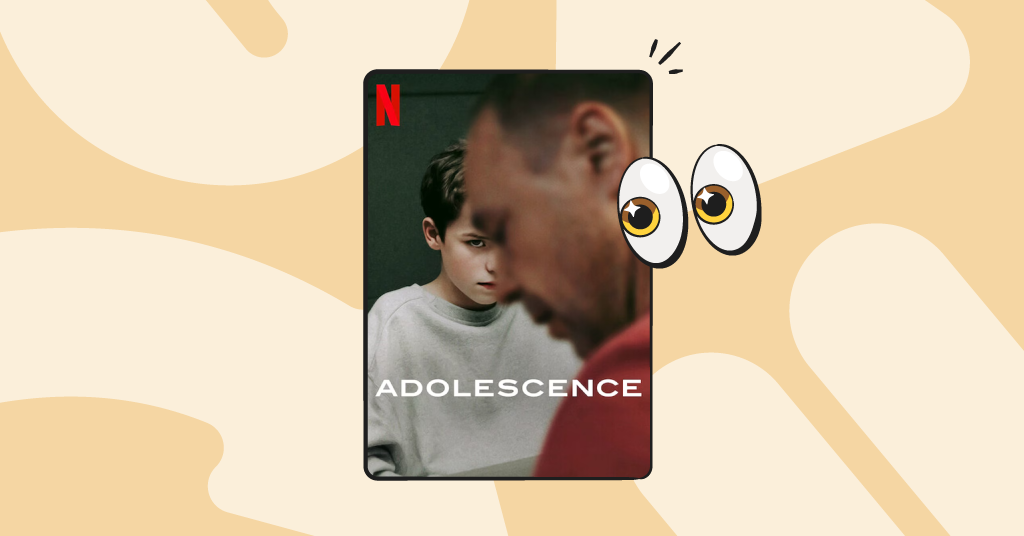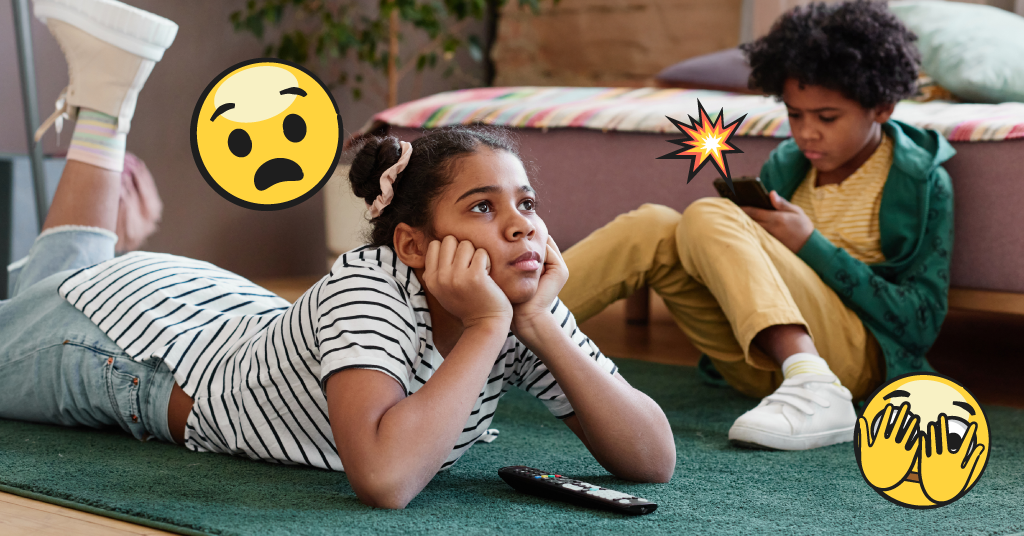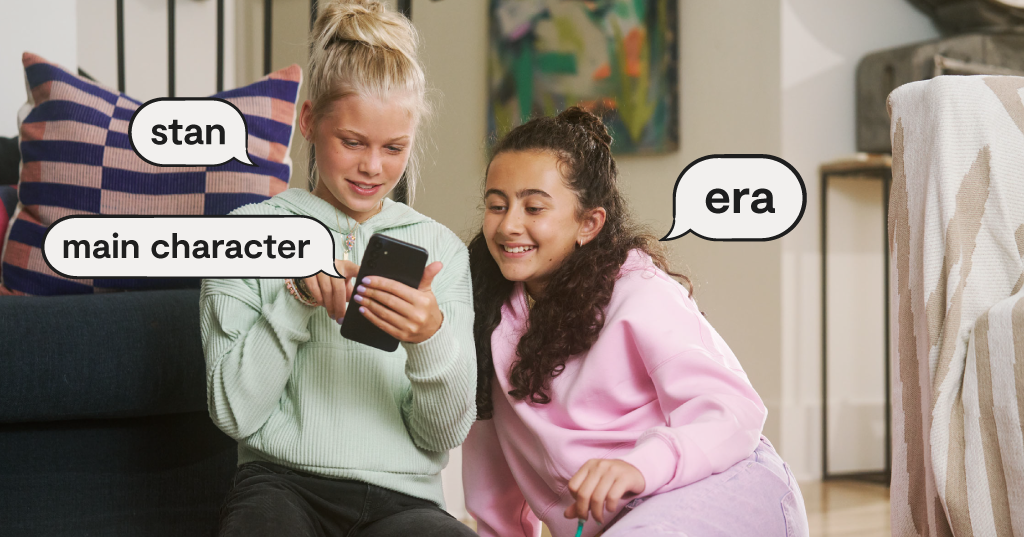The new Netflix series Adolescence follows the arrest and criminal investigation of a young English boy named Jamie. He’s accused of the murder of a classmate, and throughout the four-part series, we learn how the effects of bullying, social media, and mental health issues have impacted his young life.
And while the show is a dramatic presentation about a shocking and tragic act by a troubled 13-year-old, it casts an eye-opening spotlight on the inner lives of modern children, from the chaos of Instagram drama and the shocking ways kids have lost respect for school staff to the subtle ways children are being influenced by extremist thought online.
In this post, we’ve gathered the five most impactful points the show made about growing up in the digital age, along with conversation starters for talking about some of these issues with your own child.
1. The things kids do on social media are never, ever private — and could end up being used against them.
After Jamie is arrested in episode one, he’s questioned by police officers who present him with multiple screenshots of his Instagram account activity, including posts and comments. It’s a shocking scene, and you can see the visible discomfort and shame on his face when he’s forced to explain his questionable online activity.
Kids often think that what they do online isn’t a big deal, especially if they have private profiles. But here’s a quick, eye-opening example: If your kid allows 100 people to follow them, then 100 people out there in the world can view all of their posts, stories, likes, and comments. Someone could, theoretically, do whatever they wanted with that content, which is a sobering realization.
It’s unclear whether Jamie had a public profile in the show — most likely yes, given how quickly they obtained the screenshots — but law enforcement can get subpoenas that open up social media accounts and even unlock phones in cases of alleged crimes.
Conversation starters
- “How many people do you think can see all of your social media posts? Do you know all of them in real life?
- “What are some ways you think Snapchat messages can be shared with other people?”
- “If your last private conversation was screenshot and shared to all your friends, how would you feel?”
2. Cyberbullying isn’t just teasing — on social media it’s broadcast live 24/7 with devastating mental health effects.
Bullying in the ‘80s and ‘90s was (generally) limited to in-person interactions and rumors. These of course were still hurtful, but the bullying that happens today is truly insidious, and many parents don’t quite understand how devastating it can be. Cyberbullying occurs 24/7, and leaves a perpetual record of what occurred in the form of comments, posts, and messages.
There’s a scene in Adolescence where Alex explains to his dad how Katie’s mean comments on Jamie’s Instagram post were “liked” by other students. To use an analogy, it’s kind of like having a huge poster with something hurtful written about you in the school cafeteria co-signed by all your peers, but instead it’s right there for everyone to see on an Instagram account at any time of day. And while this bullying doesn’t excuse Jamie’s crime, it does shed light on how social media bullying can drastically affect a kid’s sense of self.
Conversation starters
- “What are some subtle ways bullying happens on social media that you’ve seen or heard about?”
- “How would you feel if you saw all your friends on Life360 hanging out without you?”
- “Why do you think cyberbullying is more hurtful than in-person bullying?
3. Emojis & slang terms change constantly and can hide messages parents may never figure out on their own.
A surprising break in the murder investigation comes when the detectives learn about the hidden meanings of some of the emojis Jamie and Katie use, transforming them from seemingly harmless little graphics into hurtful statements about Jamie’s unattractiveness.
Each generation always has their own slang terms to help assert their independence from “old folks,” but today’s hyperconnected world means the terms change constantly. TikTok trends, YouTube videos, and other popular platforms influence this linguistic shift, and parents are usually left in the dust when it comes to deciphering them.
This is one way Bark’s content monitoring towers above our competitors — our AI scans messages and posts and can pick up on the latest emojis and their meanings in context, giving parents insight into what their child is actually trying to communicate. We also publish slang dictionaries that are regularly updated.
Conversation starters
- “What’s one emoji you think I definitely don’t know?”
- “Have you ever commented on a photo with a special emoji? What were you trying to say?”
- “Has anyone ever hurt your feelings with an emoji?”
4. Nude photos spread like wildfire across campuses — even middle schools.
There’s a saying these days that can be hard to hear, but: Sexting is the new first base. This shocking statement is unfortunately very true, and it can happen even with tweens. We learn that Katie’s nudes get spread around on Snapchat, but Jamie describes it utterly nonchalantly, as if this sort of thing just happens. Sadly, it does.
Giving tweens phones that have hi-resolution cameras and the ability to send photos instantaneously — all without the benefit of a fully developed frontal lobe — often results in these sort of mistakes. But unlike other childhood blunders, sending nudes can result in tragic consequences, and not just the shame and embarrassment of having one’s intimate photos revealed. Anxiety, depression, suicidal ideation/suicide, and sextortion can all result from it.
Conversation starters
- “Have you heard about nude photos being shared around your school?”
- “Why do you think people send nude photos? What are they trying to do?”
- “What do you think you should do if you ever get sent or come across someone else's nude photo?”
5. The internet is introducing kids to adult concepts that are years beyond their understanding.
In Adolescence, the kids all know about “incels” and the “80/20” rule — all concepts that are light-years beyond their understanding and which belong to extremist online subcultures.
Kids are vulnerable to media like this that is at its core manipulative, and it’s all available in a matter of seconds with a quick Google search. Some kids even accidentally stumble across things like this thanks to algorithms on TikTok, Instagram, and YouTube, and then are fed even more disturbing content in a feedback loop. At this point, they’re in over their head and it impacts their young hearts and minds, making it hard to unsee what they've learned.
Conversation starters
- “Have you ever come across a video or post that felt a little too grown-up or confusing?”
- “Do you know you can always come to me if you see something online that makes you uncomfortable?”
- “Why do you think some people share extreme or shocking content online?”
How Bark Can Help
The biggest takeaway from Adolescence is that parents must be more involved in their children’s digital worlds. This is no easy feat of course — and kids can have secret accounts — but it can be done with the right tools. Giving a kid a phone with no guardrails is a sure recipe for potential issues, and it’s our job as parents to shepherd their use and teach them how to use these devices in a healthy, safe way.
Delay smartphone use as long as possible
The kids in Adolescence are all 13, which is not a terribly young age by modern standards for children to have phones. But if it’s all possible for your family, try and wait as long as you can — it will only benefit them in the long run. And if it’s not possible, consider alternatives like a smart watch or a locked-down kid’s phone like the Bark Phone.
Limit access
Once your kid has a smartphone, don’t give them free rein. Block inappropriate apps and websites, and set them up with a custom screen time schedule that doesn't let them scroll all night and throughout the school day.
Monitoring for dangers
This one’s perhaps the most important thing a parent can do for their kid’s online safety. Bark’s content monitoring scans for potential issues and sends alerts so you can check in and make sure everything is okay. It scans texts, saved photos/videos, search queries, social media and app activity, and more. The kinds of issues it finds range from bullying and depression to online predators and drugs/alcohol.
Take advantage of our resources
At Bark, we provide not only tools but also free resources for parents who are on the journey of raising kids in the digital age. From our content reviews and brand-new podcast to our tech guides and Facebook group, we’re with you every step of the way.
Use the Bark product that’s right for your family
We offer a variety of products that help parents protect their kids online, including the Bark app, the Bark Watch, the Bark Phone, and the Bark Home. Check out our products page to find out which one is the best fit for your child.
Bark not available in your country yet? Join our international waitlist!
Read more
Bark helps families manage and protect their children’s digital lives.






